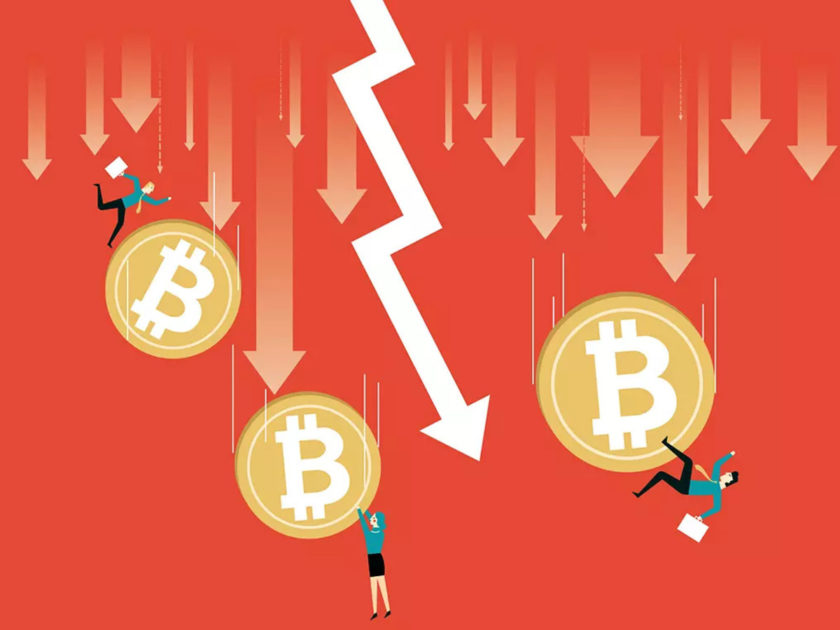What is Dogecoin?
Dogecoin is an alternative coin — more commonly known as an Altcoin — that was established by co-founders Jackson Palmer and Billy Markus in 2013. It was initially created as a joke — based on the well-known “Doge” meme.
Each coin has its own blockchain infrastructure and operating system. Dogecoin runs on the same blockchain infrastructure and uses similar proof-of-work operating systems — a mathematical security system used to verify transactions and approve task execution — as Litecoin and Ethereum, with small modifications.
How is Dogecoin different from Bitcoin?
Bitcoin and dogecoin are extremely different cryptocurrencies.
Bitcoin is a widely-used, reputable coin that acts as legal tender in many countries across the world, as well as in transnational markets and industries. Dogecoin lacks the legitimacy and global infrastructure to reach the heights of Bitcoin.
They also differ drastically in market share. With Bitcoin, there’s a finite number of coins available, creating a limited supply. Dogecoin has an endless supply of tokens, meaning supply can never outpace demand, leaving it in a permanently deflationary state.
Both Dogecoin and Bitcoin also run on different blockchain networks — and different advancements in blockchain technologies are one of the determining factors of market fluctuations.
Bitcoin runs on its own blockchain network, whereas Dogecoin piggybacks off the Ethereum blockchain, but with its own slight changes to transaction tracking and payment recording.
Is Dogecoin better than Bitcoin?
Deciding which cryptocurrency is better will ultimately come down to what a user is looking for from their coin.
If users are looking for transaction speeds and lower fees, Dogecoin is superior due to the Ethereum-based blockchain, being designed specifically for rapid, seamless transactions.
However, if it’s accessibility, usability and value that users are looking for, Bitcoin outperforms Dogecoin because it’s more widely-used and available — meaning users have more options when it comes to making and receiving payments.
From an investment standpoint, Bitcoin stands head and shoulders above Dogecoin. While Dogecoin is struggling to reach 1 cent in value, Bitcoin fluctuates on average between 27-30 thousand dollars per coin.
While Bitcoin’s value is based on quantifiable aspects — like its widespread usage, user popularity and limited circulation — Dogecoin doesn’t have too much room for growth given its endless supply and low user uptake.
Dogecoin vs Bitcoin price
The difference between the current and historical price fluctuations of the two coins couldn’t be more different.
At the height of its reign, Dogecoin peaked at 74 cents, having opened on the market at 0.017 cents per coin — meaning its value went up by over 9000% during the cryptocurrency boom.
In that same period, Bitcoin had a meteoric rise — peaking at over $61k and opening at $327 — growing at a percentage rate of over nine million percent from opening.
Both coins have historically reached dizzying heights — allowing those traders who were hot on the trends to see staggering profits.
However, the popularity, accessibility and user uptake of Bitcoin means it’s the more valuable coin by a wide margin.
Dogecoin mining vs Bitcoin mining
“Crypto mining” is a common way for users to get hold of valuable coins.
The process of mining involves using powerful computers and high-speed internet connectivity to automatically solve a series of complex puzzles and algorithms to validate transactions and secure small portions of coins.
With enough portions, miners begin to accrue enough value to make the long process of mining worthwhile.
Despite the popularity of Bitcoin, it’s much more time-consuming to mine than its Dogecoin counterpart.
Bitcoin miners typically take around ten minutes to approve transaction blocks, whereas Dogecoin miners can approve them ten times faster, with a block every minute. Because Dogecoin runs on an adaptation of the Ethereum blockchain — which can be mined at a rate of 13 million blocks for every 700,000 Bitcoin blocks — it’s significantly easier to mine.
Frequently Asked Questions (FAQs)
Can Dogecoin grow like Bitcoin?
It’s extremely unlikely that Dogecoin will ever reach the value of Bitcoin for three key reasons.
The primary reason is popularity. Because of Bitcoin’s widespread usage and popularity, it’s infinitely more sought-after than Dogecoin.
Secondly, the circulation of Dogecoins doesn’t allow it to grow in the same way Bitcoin did. There is an unlimited number of Dogecoins, meaning the number will always be higher than demand. There is only a finite number of Bitcoins in circulation — meaning that demand will likely always outstrip supply, increasing its value.
Comparatively speaking, Dogecoin is an inflationary coin and Bitcoin is a deflationary coin, meaning Dogecoin can never grow in the same way.
Lastly, many reputable investors believe that the primary “crypto booms” are over. Only the longstanding, widely used coins like Bitcoin and Ethereum will see substantial gains whereas meme tokens like Dogecoin and Shiba Inu will never see these highs again in the eyes of many reputable traders.
Is Dogecoin still a good investment?
Despite it being a meme coin that is taken less seriously than other big players, many investors still hold Dogecoin in their portfolios.
Because you can buy a significant number of Dogecoins for incredibly low prices, even minor fluctuations can land quick profits.
However, the risk of another cryptocurrency crash — and the volatile nature of crypto in general — means that most investors will only hold a small percentage of the coin in their portfolio to mitigate against risks like the crypto crash of 2018.
What is the disadvantage of Dogecoin?
Despite it being a well-known cryptocurrency, Dogecoin has its disadvantages — both as a cryptocurrency and an investment.
Some of the disadvantages to consider when investing in Dogecoin include:
- Lack of utility — Despite being the tenth-highest cryptocurrency in terms of value, it has almost no real-world utility. Because its value is entirely based on speculation and hype derived almost entirely from its meme background, Dogecoin is inherently unstable. It also lacks the real-world use and user uptake of larger, more practical coins like Bitcoin and Ethereum.
- No supply cap – Because the supply of Dogecoin is endless, it can never outpace demand — ultimately limiting its potential for growth.
- Little supporting metrics — It historically has not been a big grower. Despite booming significantly during the crypto boom of 2017, it never exceeded a value of more than 61 cents per coin — making it an incredibly low-value asset, even at the height of its power.
Is Dogecoin a good long-term investment?
Unfortunately, without a significant shift in either how it functions as a cryptocurrency, market shifts or investor interest, it’s unlikely investors will see long-term gains on the asset.
Like all cryptocurrencies, it can act as a strong diversifier for short-term gains — given the volatile nature of the crypto market. However, its potential for long-term gains compared to established coins and tokens like Ethereum, Bitcoin and Solana, is slim.




